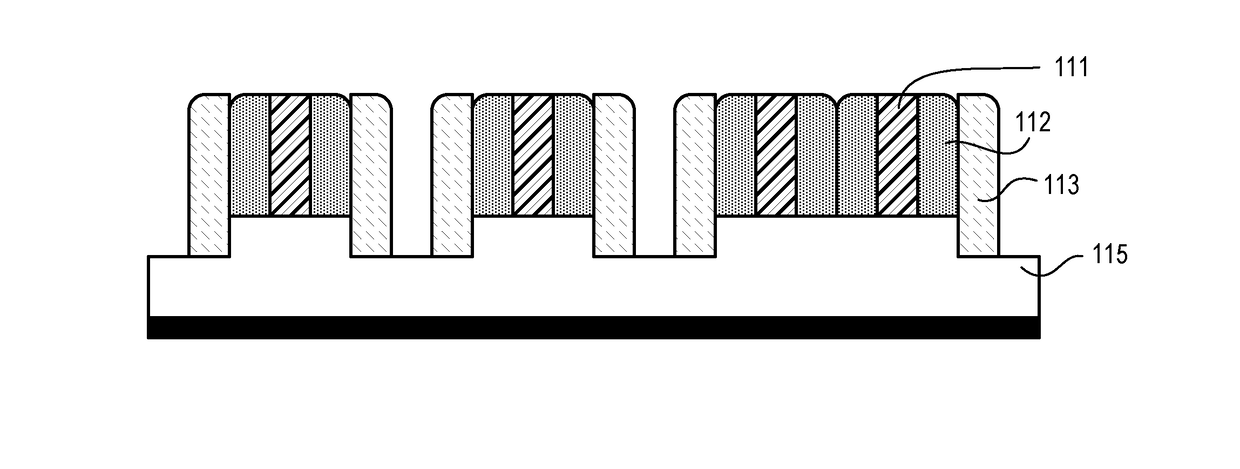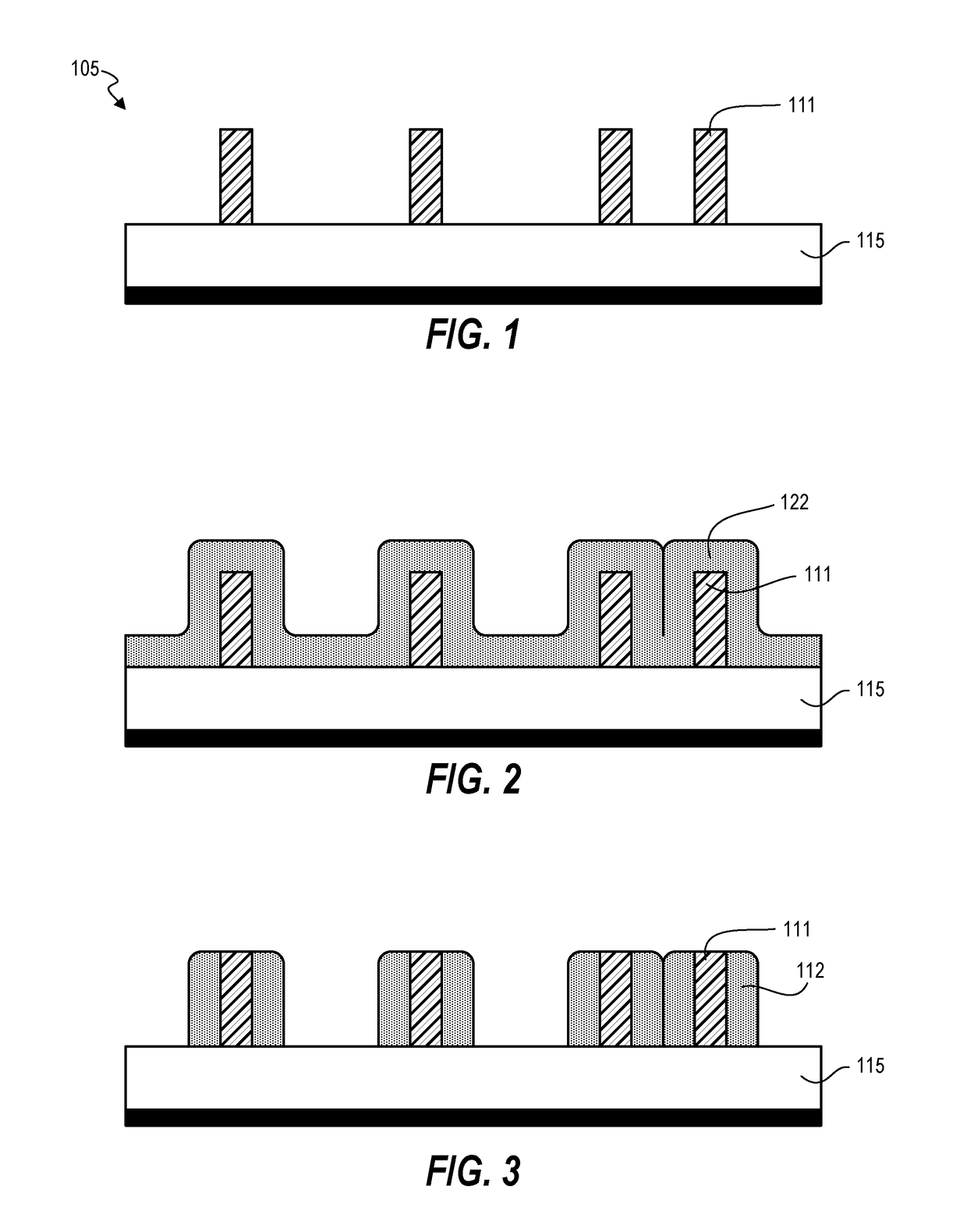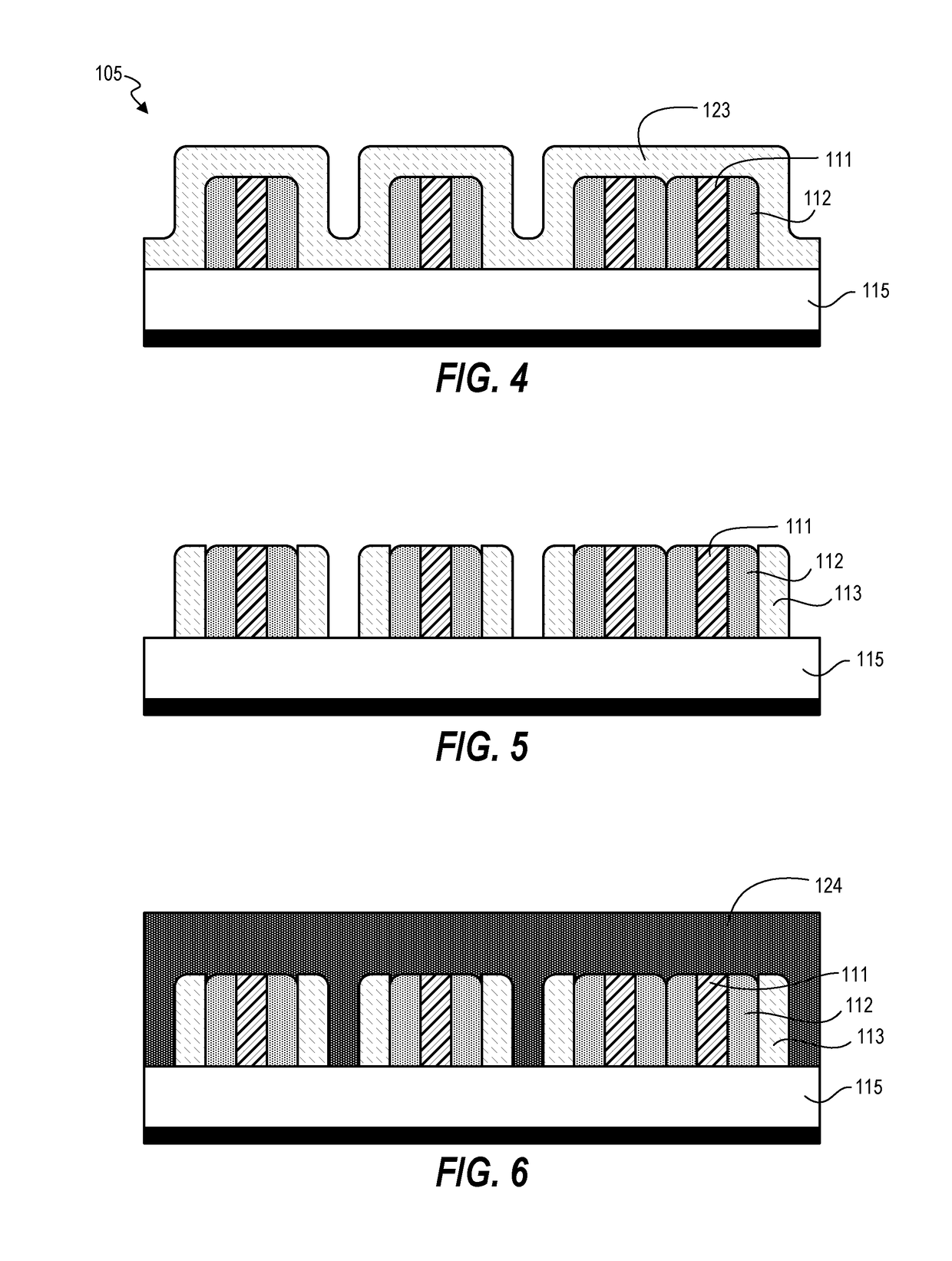Methods of Forming Etch Masks for Sub-Resolution Substrate Patterning
a technology of sub-resolution substrates and masks, applied in photomechanical treatment, instruments, electrical equipment, etc., can solve the problems of limiting the pitch or spacing between exposed features, conventional patterning techniques suffer from poor resolution or rough surface of etched features, conventional techniques cannot provide a level of uniformity and fidelity, etc., to achieve the effect of expanding the capabilities of photolithography
- Summary
- Abstract
- Description
- Claims
- Application Information
AI Technical Summary
Benefits of technology
Problems solved by technology
Method used
Image
Examples
Embodiment Construction
[0019]Techniques disclosed herein, provide a method and fabrication structure for pitch reduction (increasing pitch / feature density) for creating high-resolution features and also for cutting on pitch of sub-resolution features. Techniques include using multiple materials having different etch characteristics to selectively etch features and create cuts or blocks where specified. This can include creating a repeating pattern of materials having a pattern of A-B-C-D-C-B-A, with half pitches below 40 nanometers and even below 12 nanometers and smaller. Critical dimensions of materials can be controlled by type of deposition thickness, such as with atomic layer deposition, instead of being controlled just by optical resolution.
[0020]One embodiment includes a method of patterning a substrate. Such a method is useful for microfabrication of semiconductor devices and integrated circuits. Referring now to FIG. 1, the method includes providing a substrate 105 having mandrels 111 positioned ...
PUM
 Login to View More
Login to View More Abstract
Description
Claims
Application Information
 Login to View More
Login to View More - R&D
- Intellectual Property
- Life Sciences
- Materials
- Tech Scout
- Unparalleled Data Quality
- Higher Quality Content
- 60% Fewer Hallucinations
Browse by: Latest US Patents, China's latest patents, Technical Efficacy Thesaurus, Application Domain, Technology Topic, Popular Technical Reports.
© 2025 PatSnap. All rights reserved.Legal|Privacy policy|Modern Slavery Act Transparency Statement|Sitemap|About US| Contact US: help@patsnap.com



